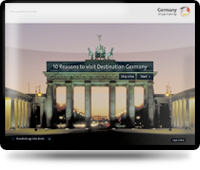Other highlights
Contact
Tourist Information
Rheinkai 21
55411 Bingen am Rhein
Email:
tourist-information@bingen.de
Internet:
www.bingen.de
Rheinkai 21
55411 Bingen am Rhein
Email:
tourist-information@bingen.de
Internet:
www.bingen.de
Places of interest

Mouse Tower, Bingen's most famous landmark, is set on a small island in the river Rhine. It has long been associated with the gloomy tale of the miserly bishop, Hatto II, said to have been killed here by thousands of mice in 970. The tower owes its present appearance to reconstruction work carried out under Prussian rule.
Events throughout history, from Roman Times to the Second World War, have left their mark on this fortress on Kloppberg hill. Destroyed and rebuilt many times, the castle is now one of Bingen's most magnificent landmarks.
During their time here, the Romans had a great influence on the whole of the Upper Middle Rhine Valley. The excavated remains of an original Roman estate dating from the first centuries AD can be seen at the "villa rustica". There are also a number of finds, information boards and pictures documenting the excavation work carried out here.
Travel Planner
Select an option...
 Skip to content
Skip to navigation
Skip to subnavigation
Skip to search
Skip to content
Skip to navigation
Skip to subnavigation
Skip to search




